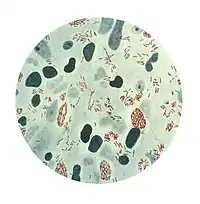Mycobacterium leprae
Mycobacterium leprae is a bacteria. It causes the disease, leprosy, also known as Hanson's Disease. The bacterium was discovered in 1873 by a Norwegian doctor named Gerhard Armauer Hansen. M. leprae is a gram-positive, aerobic rod surrounded by the characteristic waxy coating unique to Mycobacteria. In size and shape, it closes resembles M. tuberculosis. Due to its thick, waxy coating, stains with carbol-fuchsin are used, rather than with the traditional Gram staining method.
| Mycobacterium leprae | |
|---|---|
 | |
| Microphotograph of Mycobacterium leprae taken from a skin lesion | |
| Scientific classification | |
| Kingdom: | |
| Phylum: | |
| Order: | Actinomycetales |
| Suborder: | Corynebacterineae |
| Family: | |
| Genus: | |
| Binomial name | |
| Mycobacterium leprae Hansen, 1874 | |
This article is issued from Wikipedia. The text is licensed under Creative Commons - Attribution - Sharealike. Additional terms may apply for the media files.